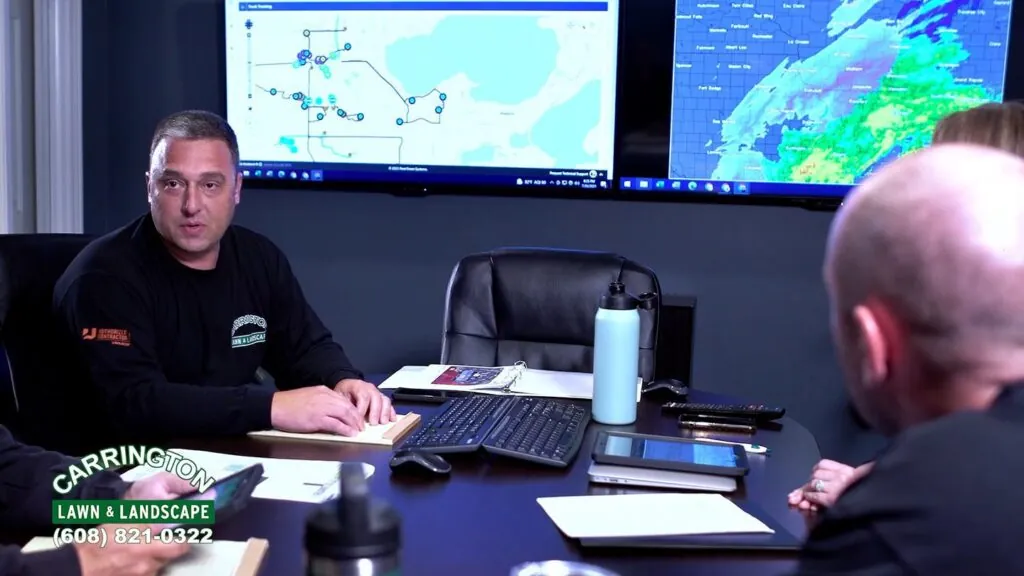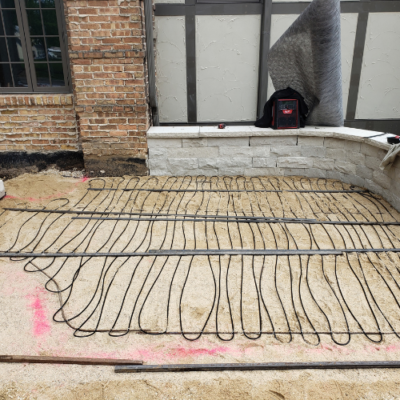
Tips for Snow Removal on Pavers
Tips for Snow Removal on Pavers: Protect Your Patios and Driveways This Winter
Winter in Middleton means cold temperatures and heavy snowfall, making it essential for homeowners and business owners to prepare their outdoor spaces for the season. If you have paver patios, driveways, or walkways, proper snow removal is key to preventing damage and ensuring that your pavers stay looking their best. At Carrington Lawn & Landscape, we specialize in paver installation and maintenance, and we’re here to help you protect your investment. With our expert advice, you can confidently tackle snow removal on pavers this winter without worrying about long-term damage to your outdoor surfaces. In this blog, we’ll share some tips on how to safely and effectively remove snow from pavers without causing harm or premature wear.
Best Practices for Snow Removal on Pavers
When it comes to snow removal on pavers, the goal is to keep your surfaces clear while avoiding practices that could lead to long-term damage. Here are some of the best practices to follow:
- Shovel Early and Often
It’s easier to remove lighter snow before it accumulates too much or becomes compacted. If you wait too long, snow can turn into ice, which is harder to clear and may require more aggressive techniques. Regular shoveling, especially after a light snowfall, can help you stay ahead of the weather. - Use a Plastic Shovel, Not Metal
One of the most important tips for snow removal on pavers is to use the right tools. Always use a plastic or rubber-edged shovel rather than a metal one. Metal shovels can scratch and chip the surface of your pavers, leading to long-term damage including streaks of rust. Plastic shovels are much gentler and will still clear snow effectively without harming your paver surfaces. When using equipment on larger paver installations, consider a snow broom attachment to clean and protect textured paver surfaces effectively. - Avoid Salt and De-Icing Agents
Salt and de-icing agents can be harmful to pavers. Salt can penetrate the joints between pavers, causing them to degrade over time. Additionally, salt can cause spalling, where the surface of the pavers flakes or chips away. If you must use de-icing agents, opt for those specifically labeled as safe for pavers or use them sparingly. A better alternative is to use sand for traction, which won’t damage your pavers and is much gentler on the environment. - Consider Sealing Your Patio or Driveway
Sealing your pavers before winter can provide an extra layer of protection against the elements. The sealer helps to prevent stains from any de-icing agents or dirt, keeping your pavers looking fresh and clean. - Install Heated Pavers (If Possible)
While not a common practice, heated driveways or patios are an effective option for snow removal. These systems work by warming the pavers from below melting snow and preventing it from accumulating or turning into ice. If you’re planning to install a new patio or driveway, you might want to consider this option to save time and effort in the long run.
Understanding the Impact of Paver Color and Base
Not all pavers react the same way to snow and cold temperatures. It’s worth noting that darker-colored pavers tend to absorb and retain sunlight, thus heat, better than lighter-colored pavers. This means that darker pavers may melt snow more quickly, which could reduce the amount of time you need to spend shoveling.
Additionally, the type of base used under your pavers plays a role in how they handle snow. Pavers with an open-graded base, which allows for better drainage, tend to warm up faster and melt snow more efficiently compared to those with a denser, non-permeable base. Permeable pavers, while more expensive, can be a great option for preventing water pooling and allowing melted snow to drain properly, minimizing the risk of refreezing and creating hazardous ice patches.
Preventing Common Issues: Cracking, Pooling, and Frost Heave
Several common problems can occur during the winter months if pavers aren’t properly maintained. Here are a few steps you can take to prevent them:
- Prevent Frost Heave
Frost heave occurs when water trapped beneath pavers freezes and expands, causing the pavers to shift and crack. This can be prevented by ensuring proper drainage is installed beneath your pavers during construction. Installing an open-graded base or ensuring that water is able to flow freely beneath the surface will help to avoid the buildup of moisture that can lead to frost heave. - Prevent Water Pooling
Water pooling on your pavers and refreezing is not only dangerous but can also cause damage over time. To avoid this, make sure your pavers are properly installed with adequate slope for drainage. If you’re dealing with pooling water on an existing surface, you may need to consult a professional to adjust the slope or add a drain system to prevent future issues. - Prevent Cracking and Spalling
Snow and ice can cause cracks and chips in your pavers, especially if moisture gets into the joints and freezes. Regular sealing, as mentioned earlier, can help to prevent moisture infiltration. Be sure to clear snow and ice gently, avoiding harsh scraping that can damage the surface.
By following these snow removal tips and taking the proper precautions, you can protect your pavers throughout the winter season and extend their lifespan. If you’re unsure about the best way to maintain your pavers or need professional assistance, don’t hesitate to reach out to Carrington Lawn & Landscape for expert advice.



